English
Castellano
Català
Barrerites from Alaska
Authors: Istvan and Mary J. Toth
Content by courtesy of: Alaska Garnet Mines
Barrerite was first noticed at Capo Pula on the island of Sardinia in Italy, by the sea in a tidal zone. Professor Passaglia E. and Pongiluppi D. of the University of Modena, Italy after testing the mineral, published their results in an article of the LITHOS magazine (1974 Lithos 7, 69-73) titled "Sodian Stellente from Capo Pula, Sardegna."
In the Mineralogical Magazine 1975, Vol. 40. P208 this mineral was declared a rare variety of the Zeolite family and named Barrerite in honor of Richard M. Barrer of New Zealand.
In 1994, two French mineralogists Francesco Di Renzo and Zelimir Gabelica was shown the location of my zeolite claims by a charter boat tourist guide. They removed some of the minerals for later testing. In 1997, Vol. 35, pp. 691-698 of the "Canadian Mineralogist" magazine, their laboratory testing of the zeolite from my claims showed them to be Barrerites. They also explored the surrounding area where they found some other common zeolites, but no Barrerites.
My discovery of the deposit occurred in 1984 while I was duck hunting on the tidal flats of Kuiu Island, Southeast Alaska. At first, by their superficial appearance, I was under the impression that the beautiful large crystals were nothing more than the common mineral Stilbite. Because of the mineral's attractive large crystal clusters and single crystals I started mining this deposit every summer, looking for crystal bearing cavities in the basaltic rock on the beach at low tide. These cavities could only be found in the tidal zone, mostly hidden by sand and mud.
Looking for other Barrerite filled cavities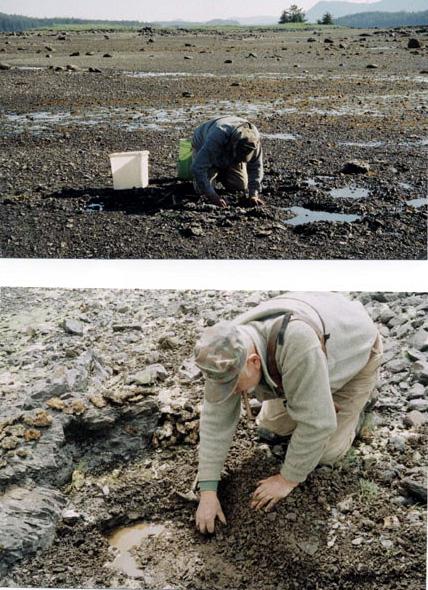
More of the Barrerites being exposed and loaded in buckets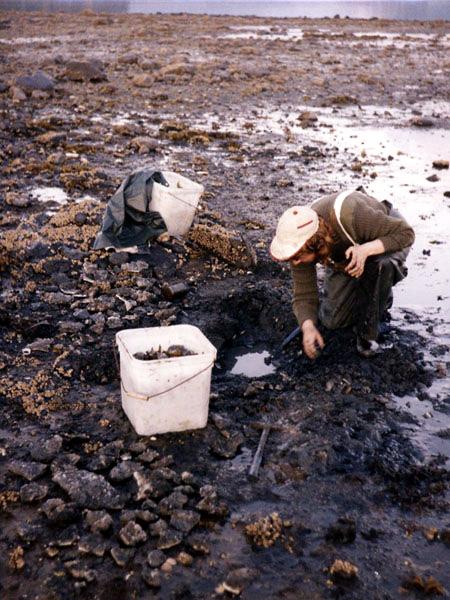
Tent camping is the only way to stay out at the Barrerite claims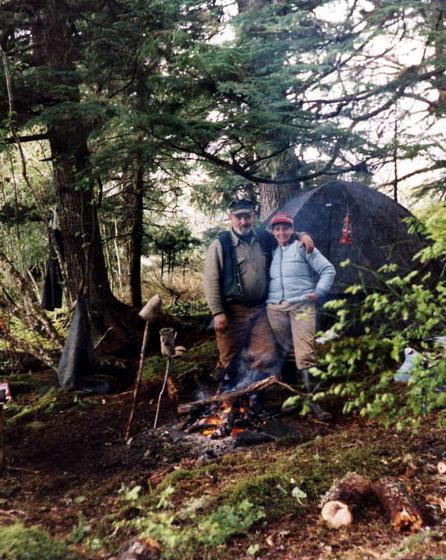
Due to my ignorance, I sold this rare mineral by the flat as the common Stilbite. Lucky for me, I always kept my best specimens and sold only the very low end by the flat. Then in 1994 the above mentioned two French mineralogists tested the crystals they had collected from my claims and found them to be Barrerite, the rarest of the Zeolite minerals. In 1997, their article in the "Canadian Mineralogist" under the title "Barrerite and Other Zeolites from Kuiu and Kupreanof Islands, Alaska" and they published the results of their research, of which I was totally ignorant until December 1998.
One of the freshly exposed Barrerite pockets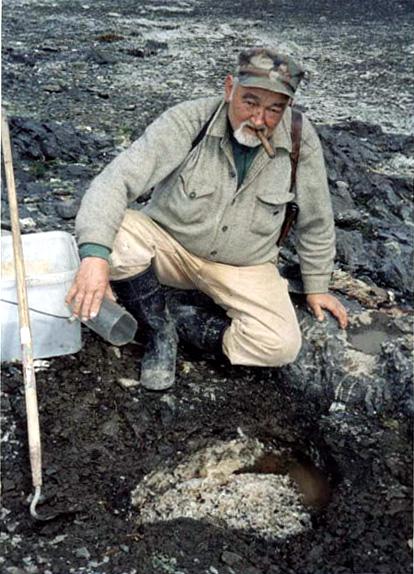
In 1998 I found it strange that the charter boat tourist guide and his associates, who never purchased a single specimen from me in previous years, suddenly were eagerly buying flats by the dozen. I wrote to Professor Rudy W. Tschernich, the author of the "Zeolites" book and described to him the location and the "supposed" minerals found on my claims. I asked him how I could have these claims inspected by a competent mineralogist. In his response he sent me copies of the article by the two French mineralogists in Canada in which they declare that the "supposed" Stilbites on my claims were Barrerites. Then it became clear the reason for the sudden buying frenzy. Because the tourist guide forgot to mention that I was the discoverer and the owner of these minerals, the professors advised him of the rarity and the value of these Barrerites once the article appeared, so the tourist guide and his associates decided to buy it up quickly, at the Stilbite prices of $30 a flat, before I knew its value.
In the original discovery site of Sardinia, there were only a few crystals found and the largest was only 5X4X1mm in size. I have several specimens of 4" crystals or larger and 1" crystals are common.
This is the Glory Hole before the world's largest Barrerite specimen was extracted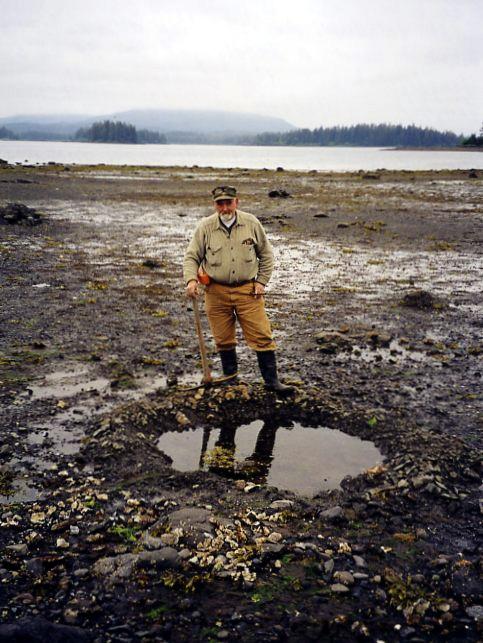
In 1999 I found the world's largest Barrerite cluster studed with 3" and 4" crystals (see photograph at the time of the discovery). It is truly a Smithsonian specimen but I am not rich enough to donate it.
This is the world's largest Barrerite specimen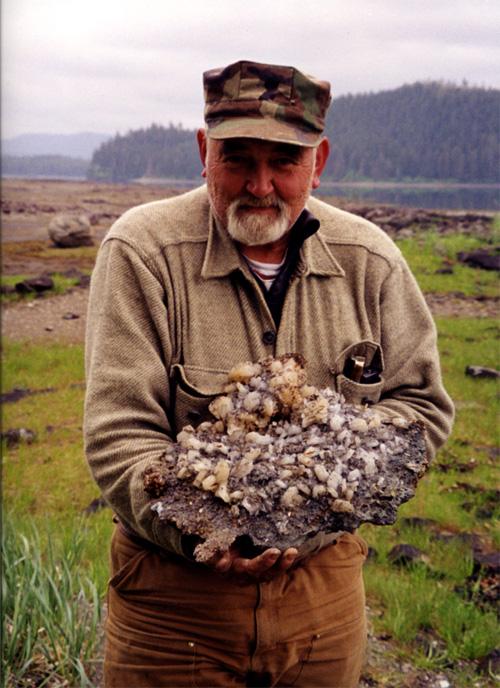
Naturally, in my 24 years of mining these specimens, the difficulty of finding new cavities under the sand and mud became more noticable as we cleaned out most of the crystal cavities that we could find. Of course, there are plenty more left under the cover of the sand and mud, that could be exposed by a good stormy sea.
Waiting for the plane to take us home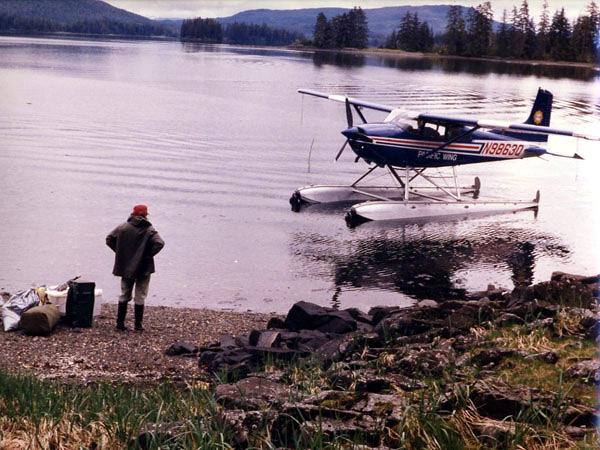
In 2008 we sold our claims, due to my advanced age and the fact that we had moved to California. Never the less, the most spectacular specimens of this very rare mineral, the best of my 24 years of mining, are still available for sale.
There were several claims made of other discoveries of Barrerite. One was in the middle of the Northwest Territories in Canada. However, I could never obtain a verification from a reputable laboratory of the mineral in question. In any case, it seems that Barrerite is associated with sea water where it has apparently obtained its sodium content. To my knowledge all this other Barrerite discovery claims turned out to be nothing more than Stellerite.
Content by courtesy of: Alaska Garnet Mines
Information | Mineral photos | VIDEOS | Articles | Fairs | Web directory | Classified ads | Minerals Books | Shop


